Digital Posters
Epilepsy & TBI: Damaged by Epilepsy, Etc.
ISMRM & SMRT Annual Meeting • 15-20 May 2021

| Concurrent 5 | 13:00 - 14:00 |
 |
1033.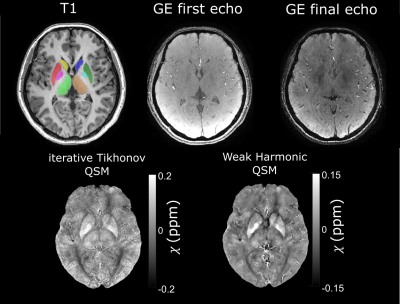 |
Quantitative Susceptibility Mapping (QSM) is Sensitive to Hippocampal and Subcortical Gray Matter Changes in Temporal Lobe Epilepsy
Oliver C. Kiersnowski1, Gavin P. Winston2,3, Emma Biondetti1,4, Sarah Buck2, Lorenzo Caciagli2,5, John Duncan2, Karin Shmueli1, and Sjoerd B. Vos6,7
1Department of Medical Physics and Biomedical Engineering, University College London, London, United Kingdom, 2Department for Clinical and Experimental Epilepsy, University College London, London, United Kingdom, 3Department of Medicine, Division of Neurology, Queen's University, Kingston, ON, Canada, 4Institut du Cerveau – ICM, INSERM U 1127, CNRS UMR 7225, Sorbonne Université, Paris, France, 5Department of Bioengineering, University of Pennsylvania, Philadelphia, PA, United States, 6Centre for Medical Image Computing, Computer Science Department, University College London, London, United Kingdom, 7Neuroradiological Academic Unit, UCL Queen Square Institute of Neurology, University College London, London, United Kingdom
Although temporal lobe epilepsy (TLE) results in widespread changes in MRI measures of tissue volume, diffusion and functional connectivity, changes in tissue composition in TLE have not been investigated with MRI. Quantitative susceptibility mapping (QSM) is sensitive to changes in tissue composition, in particular to iron and myelin. Here, we show for the first time that QSM is sensitive to gray matter abnormalities in 31 patients with temporal lobe epilepsy (TLE) compared to 23 healthy controls, and showed significant susceptibility changes in the hippocampus in left TLE patients, and in the bilateral thalamus in both left and right TLE.
|
||
1034.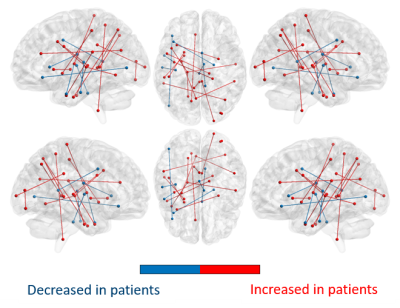 |
Increased connectivity strength in operculo-insular epilepsy leveraged by COMMIT-based surface-enhanced tractography
Sami Obaid1,2, Françcois Rheault2,3, Manon Edde2, Guido Guberman4, Etienne St-Onge2, Jasmeen Sidhu2, Alain Bouthillier5, Alessandro Daducci6, Dang Khoa Nguyen7, and Maxime Descoteaux2
1Department of Neurosciences, Université de Montréal, Montréal, Quebec, Canada, Montréal, QC, Canada, 2Sherbrooke Connectivity Imaging Lab (SCIL), Université de Sherbrooke, Sherbrooke, Quebec, Canada, Sherbrooke, QC, Canada, 3Electrical Engineering, Vanderbilt University, Nashville, TN, United States, Nashville, TN, United States, 4Department of Neurology and Neurosurgery, Faculty of Medicine, McGill University, Montreal, QC, Canada, Montreal, QC, Canada, 5Division of Neurosurgery, CHUM, Montréal, Quebec, Canada, Montreal, QC, Canada, 6Department of Computer Science, University of Verona, Verona, Italy, Verona, Italy, 7Service de Neurologie, CHUM, Montréal, Québec, Canada, Montreal, QC, Canada
Operculo-insular epilepsy (OIE) is a rare and under-diagnosed pathology due to its heterogeneous presentation. Interestingly, no studies have looked at the structural connectome in OIE. In this study, we used a cutting-edge diffusion MRI processing pipeline to evaluate the connectivity pattern of OIE. The filtering-based COMMIT weight obtained from surface-enhanced tractography was used as a marker of ‘connectivity strength’. We found an increase in ‘connectivity strength’ within the epileptic network of OIE. Moreover, the pattern of connectivity was distinct from the one of TLE, potentially constituting a tool to help differentiate OIE from the closely related and challengingly distinguishable TLE.
|
|||
1035.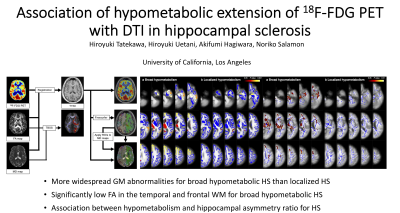 |
Association of hypometabolic extension of 18F-FDG PET with DTI in hippocampal sclerosis
Hiroyuki Tatekawa1, Hiroyuki Uetani1, Akifumi Hagiwara1, and Noriko Salamon1
1UCLA, Los Angeles, CA, United States
To assess associations between hypometabolic extensions of FDG PET and DTI, including MD and FA, 36 unilateral hippocampal sclerosis were stratified into broad hypometabolic (n=26) and localized groups (n=10) by the extension of FDG hypometabolism beyond or within the temporal lobe. Gray matter (GM) ROIs and TBSS were used to compare MD of GM and FA of white matter (WM) between hemispheres ipsilateral and contralateral to epilepsy focus. Associations between hypometabolism and DTI alterations, including more widespread GM abnormalities for broad than localized groups and significantly decreased FA in the temporal and frontal WM for broad group, were identified.
|
|||
1036.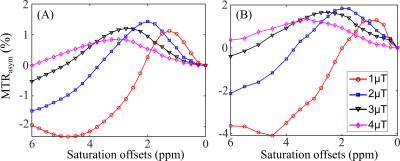 |
Analysis of Exchangeable Pool Contributions to the Chemical Exchange Saturation Transfer Signal Using a 2-stage Simulation Method
Qingqing Wen1, Kang Wang2, Yi-Cheng Hsu3, Yan Xu4, Yi Sun3, Dan Wu1,2, and Yi Zhang1,2
1Key Laboratory for Biomedical Engineering of Ministry of Education, Department of Biomedical Engineering, College of Biomedical Engineering & Instrument Science, Zhejiang University, Hangzhou, China, 2Department of Neurology, First Affiliated Hospital, College of Medicine, Zhejiang University, Hangzhou, China, 3MR Collaboration, Siemens Healthcare Ltd., Shanghai, China, 4Department of Neurosurgery, Zhejiang Provincial People's Hospital, HangZhou, China
A 2-stage simulation method was proposed to estimate the leading contributor to the CEST contrast between disease and normal tissues. First, the proposed method generates a best Bloch-McConnell fit to the MTRasym spectra of the normal brain tissues. Second, it alters only one exchange parameter in the Bloch-McConnell model to fit the MTRasym spectra of disease tissues each time. The candidate parameter that yields the smallest error between simulated and experimental results is identified as the leading contributor to the CEST contrast. The proposed method was validated in numeric phantoms and 9 tuberous sclerosis complex (TSC)-associated epilepsy patients.
|
|||
1037.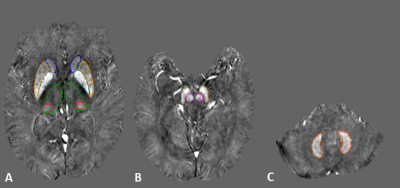 |
Evaluating Brain Iron Content in Patients with Idiopathic Rapid Eye Movement Sleep Behavior Disorder
Kiarash Ghassaban1,2, Chao Chai3, Huiying Wang4, Tong Zhang3, Jinxia Zhu5, Xianchang Zhang5, E. Mark Haacke1,2, and Shuang Xia3
1Department of Radiology, Wayne State University, Detroit, MI, United States, 2SpinTech, Inc., Bingham Farms, MI, United States, 3Department of Radiology, Tianjin First Central Hospital, Tianjin, China, 4Department of Neurology, Tianjin Medical University General Hospital Airport Site, Tianjin, China, 5MR Collaboration, Siemens Healthcare Ltd, Beijing, China
Out of 29 idiopathic rapid eye movement behavior disorder (iRBD) patients and 28 age-matched healthy controls (HCs), 12 patients showed bilateral or unilateral loss of the N1 sign as opposed to two HCs with unilateral N1 loss. Additionally, both global and regional high susceptibility analyses showed significantly higher iron deposition in the right dentate nucleus (DN) along with significantly lower bilateral volume of the caudate nucleus in iRBD patients. These findings taken together with significant correlations between iron measurements and several cognitive and motor impairment scores may be indicative of biomarkers of an early neurodegenerative process in the iRBD patients.
|
|||
1038.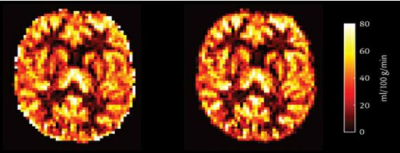 |
Early Diagnosis of Dementia (AD/MCI/Normal Aging) Based on CBF-Maps Derived from ASL–MRI and Artificial Intelligence
Soroor Kalantari1, Fardin Samadi Khosh Mehr2, Mohammad Soltani1, Mehdi Maghbooli3, Zahra Rezaei4, Soheila Borji1, Behzad Memari1, Mohammad Bayat1, Behnaz Eslami5, and Hamidreza Saligheh Rad6
1Department of Radiology, Zanjan University of Medical Science, Zanjan, Iran (Islamic Republic of), 2Department of Medical Physics and Biomedical Engineering, Tehran University of Medical Sciences, Tehran, Iran (Islamic Republic of), 3Department of Neurology, Zanjan University of Medical Science, Zanjan, Iran (Islamic Republic of), 4Department of Computer and Electrical Engineering, University of Kashan, Kashan, Iran (Islamic Republic of), 5Tehran Islamic Azad University, Tehran, Iran (Islamic Republic of), 6Quantitative MR Imaging and Spectroscopy Group, Research Center for Molecular and Cellular Imaging, Department of Medical Physics and Biomedical Engineering, Tehran university of Medical Science, Tehran, Iran (Islamic Republic of)
This study aims to investigate the use of high-level de-noising and machine-learning methods applied on ASL-MRI dataset acquired at 1.5T, and in order to to find important regions in the brain for the classification of patients with AD and MCI and normal aging. Automated classification and prediction methods recognizing perfusion changes in specific subregions of the brain are applied to pseudo-continuous ASL-derived CBF-maps, predicting the diagnosis of Alzheimer's disease, mild cognitive impairment, and normal cognition. Due to alarming prevalence of AD, machine-learning approaches for ASL- MRI are used to develop computer-aided diagnosis (CAD) tools for clinical and screening targets, assisting early diagnosis of the AD process.
|
|||
1039.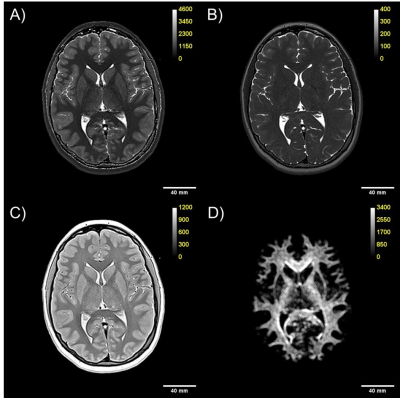 |
On the Spectrum of Dysmaturation of the Extremely Preterm Brain at Adolescence: Combined MS-qMRI Outcomes of the ELGAN-ECHO Study.
Ryan McNaughton1, Hernan Jara1,2, Chris Pieper2, Julie Rollins3, Osamu Sakai2, Laurie Douglass2, Rebecca Fry3, Karl Kuban2, and T. Michael O'Shea3
1Boston University, Boston, MA, United States, 2Boston University Medical Center, Boston, MA, United States, 3University of North Carolina at Chapel Hill School of Medicine, Chapel Hill, NC, United States
Purpose: To describe the spectrum of MS-qMRI outcomes in the extremely preterm (EP) brain at adolescence and identify relationships expressed as a result of dysmaturation. Methods: Quantitative MR algorithms create maps of the T1, T2, PD, and spatial entropy (SE) for 341 EP born individuals using MR images obtained with the Tri-TSE pulse sequence at age 15 years. Results: The EP brain exhibits linear relationships of T1 and PD with SE, and T2 with cerebrospinal fluid (CSF) volume. Conclusion: MS-qMRI of the EP brain provides a comprehensive quantification of dysmaturation states, from white matter structure to CSF composition.
|
|||
1040.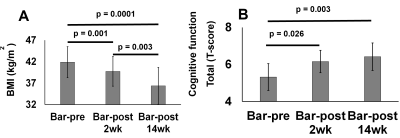 |
Brain Function in Obesity: A Pilot Study to Assess Effects of Bariatric Surgery
Nareen Anwar1, Wesley J Tucker2, Nancy Puzziferri3, Jake Samuel2, Vlad G Zaha3, Ildiko Lingvay3, Jaime Almandoz3, Jing Wang2, Edward A Gonzales2, Matthew Brothers2, Michael Douglas Nelson2, and Binu P Thomas2,3
1The University of Texas at Dallas, Richardson, TX, United States, 2The University of Texas at Arlington, Arlington, TX, United States, 3University of Texas Southwestern Medical Center, Dallas, TX, United States
Obesity is an ongoing epidemic that is associated with cognitive dysfunction and is a prominent precursor to a variety of neurogenerative diseases. Bariatric surgery is an effective and long-term weight loss strategy that can improve neurocognitive function. However, the mechanisms that drive these improvements are unknown. In this study, magnetic resonance imaging (MRI) is utilized to assess changes in cerebral metabolic rate of oxygen (CMRO2) levels in bariatric surgery candidates before and after their surgery. These values are compared with normal healthy weight controls of a similar age and reassessed after 2 weeks and 14 weeks.
|
|||
1041.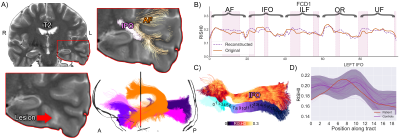 |
An n=1 approach to white matter anomaly detection in epilepsy
Maxime Chamberland1, Dmitri Shastin1,2, Sila Genc1, Khalid Hamandi1,3, William P. Gray1,2, Chantal M.W Tax1, and Derek K. Jones1
1Cardiff University Brain Research Imaging Centre (CUBRIC), Cardiff University, Cardiff, United Kingdom, 2Department of Neurosurgery, University Hospital Wales, Cardiff, United Kingdom, 3Department of Neurology, University Hospital of Wales, Cardiff, United Kingdom
Most clinical diffusion MRI (dMRI) applications rely on statistical comparisons between large groups of patients and healthy controls to infer altered tissue state. For clinicians and researchers studying small datasets, rare cases, or individual patients, this approach is clearly inappropriate. We recently developed a framework to advance dMRI-based tractometry towards single-subject analysis. By 1) operating on the manifold of white matter pathways and by 2) learning normative microstructural features to better discriminate patients from controls, our framework successfully identified idiosyncrasies in patterns along brain white matter pathways in individuals with focal cortical dysplasia (FCD).
|
|||
1042.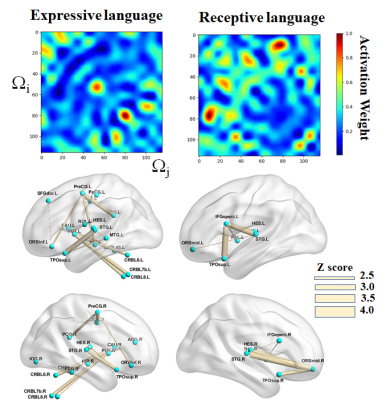 |
Graph-based global reasoning of DWI tractography connectome allows reproducible prediction of language impairment in pediatric epilepsy
Jeong-Won Jeong1, Soumyanil Banerjee2, Min-Hee Lee1, Nolan O'Hara3, Csaba Juhasz1, Eishi Asano1, and Ming Dong2
1Pediatrics, Wayne State University, Detroit, MI, United States, 2Computer Science, Wayne State University, Detroit, MI, United States, 3Translational Neuroscience Program, Wayne State University, Detroit, MI, United States
We propose a deep learning-based DWI connectome (DWIC) analytic method, characterized by convolutional neural network combined with graph convolutional network. This method trained DWIC features to predict the severity of expressive and receptive language impairment, defined by the clinical evaluation of language fundamentals test. It outperformed other state-of-the-art deep learning approaches in predicting the expressive/receptive language scores in children with focal epilepsy. It also demonstrated the smallest prediction error without a noticeable variation in the random permutation test. Further investigation is warranted to determine the feasibility of a DWIC-based prognostic biomarker of language impairment in clinical practice.
|
|||
1043.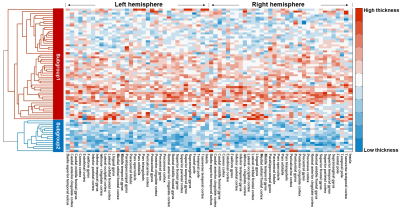 |
Two patterns of cortical thickness relate to seizure relapse in pediatric patients with epilepsy after treatment
Wenjing Zhang1, Tao Yu2, Mengyuan Xu1, Chengmin Yang1, Naici Liu1, Su Lui1, and Haibo Qu3
1Huaxi MR Research Center (HMRRC), Department of Radiology, West China Hospital of Sichuan University, Chengdu, China, 2Department of Pediatrics, West China Second University Hospital, Sichuan University, Chengdu, China, 3Department of Radiology, Key Laboratory of Obstetric & Gynecologic and Pediatric Diseases and Birth Defects of Ministry of Education, National Key Laboratory of Biotherapy, West China Second University Hospital, Sichuan University, Chengdu, China
In the present study, a data-driven analysis of structural MRI data was conducted with pediatric epilepsy patients. We first resolve neurobiological heterogeneity based on neuroanatomical features, and then investigate the clinical relevance of using MRI data to predict seizure relapse status after treatment in each identified patient subgroup. Our study limits the influence of treatment and course of illness effects, potentially enhancing the ability to identify illness-specific biomarkers that delineate patient subgroups, and can also be used to evaluate the utility of such biomarkers in predicting illness progression and treatment response.
|
|||
1044.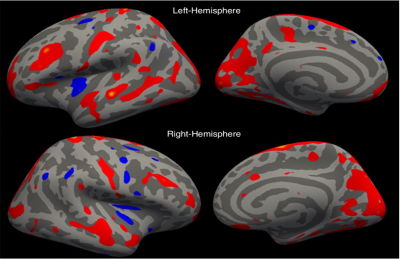 |
Cerebral Morphometric Alterations in Patients with Temporal Lobe Epilepsy related to Antero-inferior Temporal Meningoencephalocele
Laleh Eskandarian1,2, Safak Parlak3, Gokce Ayhan4, Irsel Tezer4, Serap Saygi4, and Kader Karli Oguz2,3
1Neuroscience Department, Bilkent University, Ankara, Turkey, 2National Magnetic Resonance Research Center (UMRAM), Bilkent University, Ankara, Turkey, 3Faculty of Medicine, Department of Radiology, Hacettepe University, Ankara, Turkey, 4Faculty of Medicine, Department of Neurology, Hacettepe University, Ankara, Turkey
This study investigates morphological alterations in patients with left temporal lobe epilepsy (TLE) due to ipsilateral antero-inferior temporal lobe meningoencephalocele (TLM). Compared with healthy control (HC)s, cortical thickness was increased extensively in both cerebral hemispheres with reduction in a few regions, most remarkably in the left temporal lobe. Both amygdala were significantly bigger in the patients compared with HCs. No difference was found in hippocampi and thalami between patients and HCs or between hemispheres within the patient group. No relation was found between these significant alterations and duration of disease.
|
|||
1045.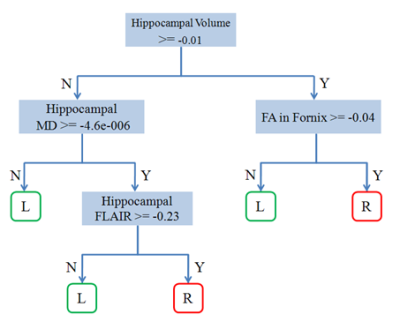 |
Lateralization of Temporal Lobe Epilepsy Using Multimodal MRI, Decision Tree, and Random Forest Methods
Alireza Fallahi1, Neda Mohammadi-Mobarakeh2, Narges Hosseini Tabatabaei3, Mohammad Pooyan4, Jafar Mehvari-Habibabadi5, Mohammad-Reza Ay2, and Mohammad-Reza Nazem-Zadeh2
1Shahed University, Tehran, Iran (Islamic Republic of), 2Tehran University of Medical Sciences, Tehran, Iran (Islamic Republic of), 3Brain and Spinal Cord Injury Research Centre, Neuroscience Institute, Tehran University of Medical Sciences, Tehran, Iran (Islamic Republic of), 4Biomedical Engineering Department, Shahed University, Tehran, Iran (Islamic Republic of), 5dr.mehvari@hotmail.com, Isfahan, Iran (Islamic Republic of)
In this study, a decision making method was developed for determination epileptogenicity in mesial temporal lobe epilepsy (mTLE) patients using different neuroimaging markers including hippocampal volume, and FLAIR (Fluid Attenuated Inversion Recovery) intensity and MD (Mean Diffusivity) value in hippocampus, FA (Fractional anisotropy) in posteroinferior cingulum, and FA in crus of fornix from MRI images of T1, FLAIR, and DTI (diffusion tensor imaging). The aim of this study is to creating an automated classification algorithm using decision tree and random forest methods. Result of applied method detected essential rules for prediction of laterality in individual mTLE patients.
|
|||
1046.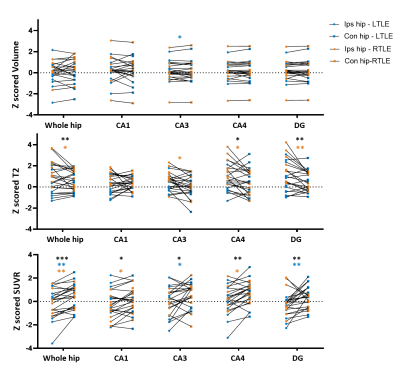 |
T2 relaxometry and 18F-FDG-PET alterations in hippocampus and hippocampal subfields in left and right MR-negative temporal lobe epilepsy
Hui Huang1, Miao Zhang2, Wei Liu3, Jia Wang1, Lihong Tang1, Qikang Li1, Biao Li2, and Jie Luo1
1School of Biomedical Engineering, Shanghai Jiao Tong University, Shanghai, China, 2Department of Nuclear Medicine, Ruijin Hospital, Shanghai Jiao Tong University School of Medicine, Shanghai, China, 3Department of Neurosurgery, Ruijin Hospital, Shanghai Jiao Tong University School of Medicine, Shanghai, China
Both PET and T2 relaxometry could provide complementary information of the epileptogenic zone, which could add value to presurgical planning of epilepsy patients. This study investigated evaluted the performance of hippocampual asymmetry measures from volumetry, T2 relaxometry and 18F-FDG PET in lateralization for MR negative left from right temporal TLE. We also investigated how hippocampal subfield alterations of T2 relaxometry and 18F-FDG-PET. Our experimental results showed the combination of T2 relaxometry and PET could complement each other in lateralization for MR-negative LTLE.
|
|||
1047.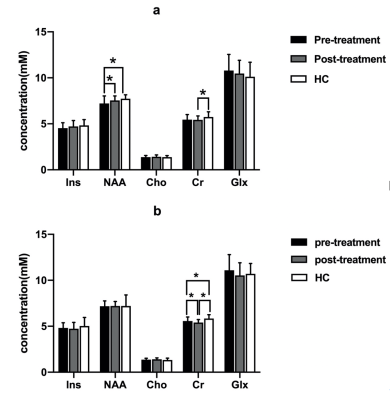 |
Proton MR spectroscopy reveals metabolic alterations in generalized tonic clonic seizures before and after treatment: a longitudinal study
Xinyue Wan1, Xiaorui Su1, Simin Zhang1, Qiyong Gong1, and Qiang Yue2
1Huaxi MR Research Center (HMRRC), Department of Radiology, West China Hospital of Sichuan University, Chengdu, China, 2Department of Radiology, West China Hospital of Sichuan University, Chengdu, China
The neurobiochemical mechanisms of Generalized tonic-clonic seizures (GTCS) patients' brains and the effects of antiepileptic drugs (AEDs) on metabolism are not yet clear. The purpose of this study was to use MRS to explore metabolic alterations of bilateral Dorsolateral prefrontal cortex (DLPFC) in pre-/post-treatment GTCS patients. We included 23 initially diagnosed GTCS patients and 23 healthy controls (HC). The metabolite level (n-acetyl aspartate, creatine) in DLPFC of GTCS patients was changed compared with that of healthy control, and AEDs had an effect on the metabolites concentration, which may explain the neurobiochemical mechanism.
|
|||
1048.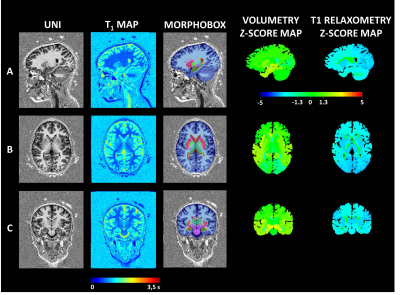 |
Automated brain MRI volumetry and T1 relaxometry in children with focal epilepsy of unknown cause.
Baptiste MOREL1,2, Anne Sophie Piegay1, Maximilien Perivier1, Sandra Obry1, Bénédicte Maréchal3,4,5, Gian Franco Piredda3,4,5, Tom Hilbert3,4,5, Tobias Kober3,4,5, Clovis Tauber6, Pierre Castelnau6, and Jean Philippe Cottier1
1CHU de Tours, Tours, France, 2UMR 1253, iBrain, Université de Tours, INSERM, Tours, France, 3Advanced Clinical Imaging Technology, Siemens Healthcare AG, Lausanne, Switzerland, 4Department of Radiology, Lausanne University Hospital and University of Lausanne, Lausanne, Switzerland, 5LTS5, École Polytechnique Fédérale de Lausanne (EPFL), Lausanne, Switzerland, 6INSERM U1253, Tours, France
In the initial exploration of children with focal epilepsy of unknown cause, MRI is useful. To increase the sensitivity of the MRI, we have defined a postprocessing Morphometric Analysis Program allowed obtaining automatically both volumetry and T1 relaxometry values in 38 brain regions. Deviations from reference ranges – previously established from a cohort of healthy subjects – help radiologists to quantify brain abnormalities undetected in brain MRI in more than 80% of our cases.
|
|||
1049.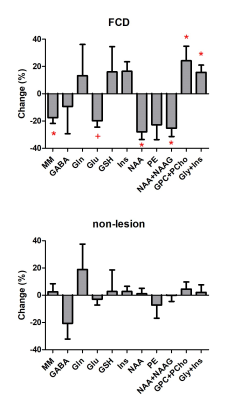 |
Neurochemical characteristics of pathological tissues in epilepsy: a 1H MRS study at 7T
Lijing Xin1,2, Philippe Reymond3, José Boto3, Serge Vulliemoz4, Francois Lazeyras 5, and Maria Isabel Vargas3
1CIBM Center for Biomedical Imaging, Lausanne, Switzerland, 2Animal Imaging and Technology, EPFL, Lausanne, Switzerland, 3Division of Neuroradiology, Diagnostic Department of Geneva University Hospitals and University of Geneva, Geneva, Switzerland, 4Division of Neurology, Neurosciences Department of Geneva University Hospitals and University of Geneva, Geneva, Switzerland, 5Center for Biomedical Imaging of Geneva and University of Geneva, Geneva, Switzerland
This study is aim to evaluate the neurochemical characteristics of pathological tissues by 1H MRS in patient with epilepsy at 7T. In comparison to the contralateral side, lesions in focal cortical dysplasia demonstrated significantly reduced macromolecule and N-acetyl aspartate, significantly increased total choline and glycine + myo-inositol, and a distinct reduction trend of glutamate. We conclude that performing MRS at high magnetic field offered the potential to reveal novel metabolic alterations in epilepsy lesions that may help to further understand the underlying pathophysiology of the disease.
|
|||
1050.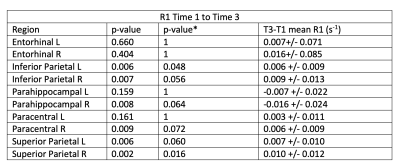 |
Assessment of R1 Relaxometry Changes Induced via Repeated Videogame Training as a Measure of Neuroplasticity in College-aged Brains
Austin Bazydlo1, Steven Kecskemeti2, Aaron Cochrane3, Thomas Gorman4, Bas Rokers5, Douglas Dean1,6, C. Shawn Green3, and Andrew Alexander1,2,7
1Medical Physics, UW-Madison, Madison, WI, United States, 2Waisman Center for Brain Imaging, UW-Madison, Madison, WI, United States, 3Psychology, UW-Madison, Madison, WI, United States, 4Psychology, Indiana University-Bloomington, Bloomington, IN, United States, 5Psychology, NYU-Abu Dhabi, Abu Dhabi, United Arab Emirates, 6Pediatrics, UW-Madison, Madison, WI, United States, 7Psychiatry, UW-Madison, Madison, WI, United States
Two video games, Need for Speed and Guitar Hero, were used as training tasks for two groups of college-aged, typically developing participants over 4 weeks and 10 total hours of training. Imaging was acquired before and after the first training session and upon completion of the last training session. The robust MPnRAGE sequence, which produces hundreds of T1 contrasts, was used to generate quantitative R1 maps. Longitudinal changes of R1 were observed in several parietal and temporal lobe areas, which may indicate a neuroplastic response due to video game training.
|
|||
1051.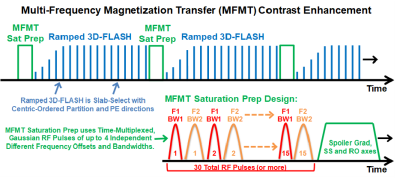 |
Multi-Frequency Magnetization Transfer (MFMT) for Improved High-Resolution Human Hippocampal Imaging at 7 Tesla
Ronald J Beyers1, Adil Bashir1, and Thomas S Denney1
1MRI Research Center, Auburn University, Auburn University, AL, United States
The growing occurrence of Alzheimer’s disease (AD) and other cognitive debilitating disease drive the need for improved neuro MRI methods at 7 Tesla. Here we present an agile multi-frequency magnetization transfer (MFMT) method for improved high resolution 3D MRI of the human hippocampus at 7T. Demonstration of MFMT on healthy volunteers quantified improved hippocampal contrast by a factor of 2.06 (p < 0.004).
|
|||
1052. |
The Volume of Hippocampal Subfields in correlation with Middle Age Healthy Adults
Salem Alkhateeb1, Tales Santini2, Regina Leckie2, nadim farhat2, Peter J Gianaros2, Anna L Marsland2, Stephen B Manuck2, and Tamer S Ibrahim2
1Bioengineering, University of Pittsburgh, Pittsburgh, PA, United States, 2University of Pittsburgh, Pittsburgh, PA, United States
As hippocampal volume has been extensively utilized as a diagnosing tool to confirm diagnosis of many neurological disorders, this study aims to employ the high resolution 7T data to segment the hippocampal subfields then correlate their volumes with the age of healthy adults’ population. The region encompassing the subregions left DG, CA2, and CA3 showed significant correlation with age, with a volume variation of approximately -1% per year. Other regions presented a trend towards reductions that did turn into significant. Future work will investigate if differences in the hippocampus subfields are correlated with cognitive performance in this population.
|
The International Society for Magnetic Resonance in Medicine is accredited by the Accreditation Council for Continuing Medical Education to provide continuing medical education for physicians.